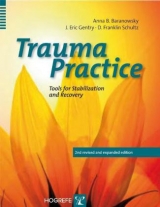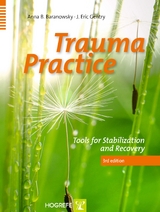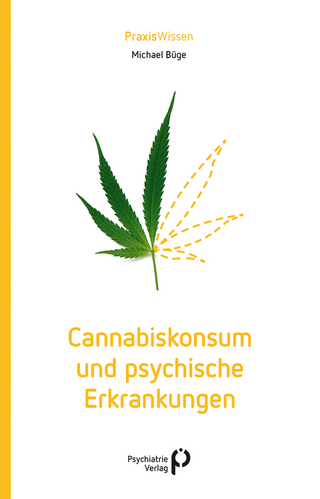Trauma Practice
Hogrefe Publishing (Verlag)
978-0-88937-380-8 (ISBN)
- Titel ist leider vergriffen;
keine Neuauflage - Artikel merken
The new edition of this structured tool-kit of techniques and protocols to assist therapists in their challenging work with trauma survivors has been substantially expanded and revised - making it even more effective tool at guiding clinicians through the maze of trauma treatment. With an emphasis upon cognitive-behavioral interventions, it provides resources and guidance for any psychotherapist working with any client. Using Herman's (1992) Triphasic Model - Safety & Stabilization, Remembrance & Mourning, and Reconnection - it presents an array of techniques, protocols, and interventions for each phase, described clearly, thoroughly, and in a structured, easy-to-follow manner.
Introduction Purpose of this Book Self-of-the-Therapist Core Objectives Book Description Supportive Texts and other Recommended Readings Section 1: Foundations of the Trauma Practice Model 1. Behavioral Therapy 2. Cognitive Therapy 3. Cognitive Behavioral Therapy 4. Cognitive Behavioral Therapy Research 5. Psychophysiology of Trauma 6. Tri-Phasic Model (Herman, 1992) 7. Necessary Ingredients - Treatment Codes (R, RE, CR) 8. Body, Cognition, Behavior and Emotion/Relation 9. Post-Trauma Response Section 2: Safety and Stabilization 1. What is Safety? Minimum Criterion Required for Transition to Phase II Treatment 2. Body: Creating a Non-Anxious Presence, Titration Part I: Trigger List using Braking and Acceleration, Progressive Relaxation, Autogenics, Diaphragmatic Breathing, 5-4-3-2-1 Sensory Grounding and Containment, Postural Grounding, Anchoring Part I: Collapsing Anchors 3. Cognition: Anchoring Part II: Safety, Safe Place Visualization, Positive Self-Talk and Thought Replacement/Transformation, Flashback Journal, Thought Stopping, Buddha's Trick 4. Behavior: Rituals, Contract for Safety and Self-Care, Safety Net Plan, Timed and Metered Expression Strategies 5. Emotion/Relation: Transitional Objects, Support Systems, Drawing Icon and Envelope (Emotional Containment), Internal Vault (Emotional Containment), Positive Hope Box Section 3: Trauma Memory Processing 1. Body: Titration Part II: Braking and Acceleration, Layering, Comfort in One Part, A Time-Line Approach, Biofeedback 2. Cognition: Downward Arrow Technique, Cognitive Continuum, Calculating True Danger, Looped Tape Scripting, Cognitive Processing Therapy, A Story-Book Approach, A Written Narrative Approach 3. Behavior: Skills Building Methods, Behavior Change Rehearsal Exercise, Imaginal and In-Vivo Exposure, Stress Inoculation Training, Systematic Desensitization 4. Emotion/Relation: Learning to Be Sad, Assertiveness Training Section 4: Reconnection 1. Body: Centering 2. Cognition: Exploring Your Cognitive Map, Victim Mythology, Letter to Self 3. Behavior: Self-Help and Self-Development 4. Emotion/Relation: Memorials, Connections with Others, In Closing Section 5: Integrative & Clinician Self-Care Models 1. The Pinnacle Program: Healing Trauma by Principle-Based Living 2. Compassion Fatigue: The Crucible of Transformation Appendix: Training Opportunities
| Erscheint lt. Verlag | 31.12.2010 |
|---|---|
| Verlagsort | Toronto |
| Sprache | englisch |
| Maße | 210 x 280 mm |
| Einbandart | Paperback |
| Themenwelt | Geisteswissenschaften ► Psychologie |
| Medizin / Pharmazie ► Medizinische Fachgebiete ► Psychiatrie / Psychotherapie | |
| ISBN-10 | 0-88937-380-9 / 0889373809 |
| ISBN-13 | 978-0-88937-380-8 / 9780889373808 |
| Zustand | Neuware |
| Informationen gemäß Produktsicherheitsverordnung (GPSR) | |
| Haben Sie eine Frage zum Produkt? |
aus dem Bereich





